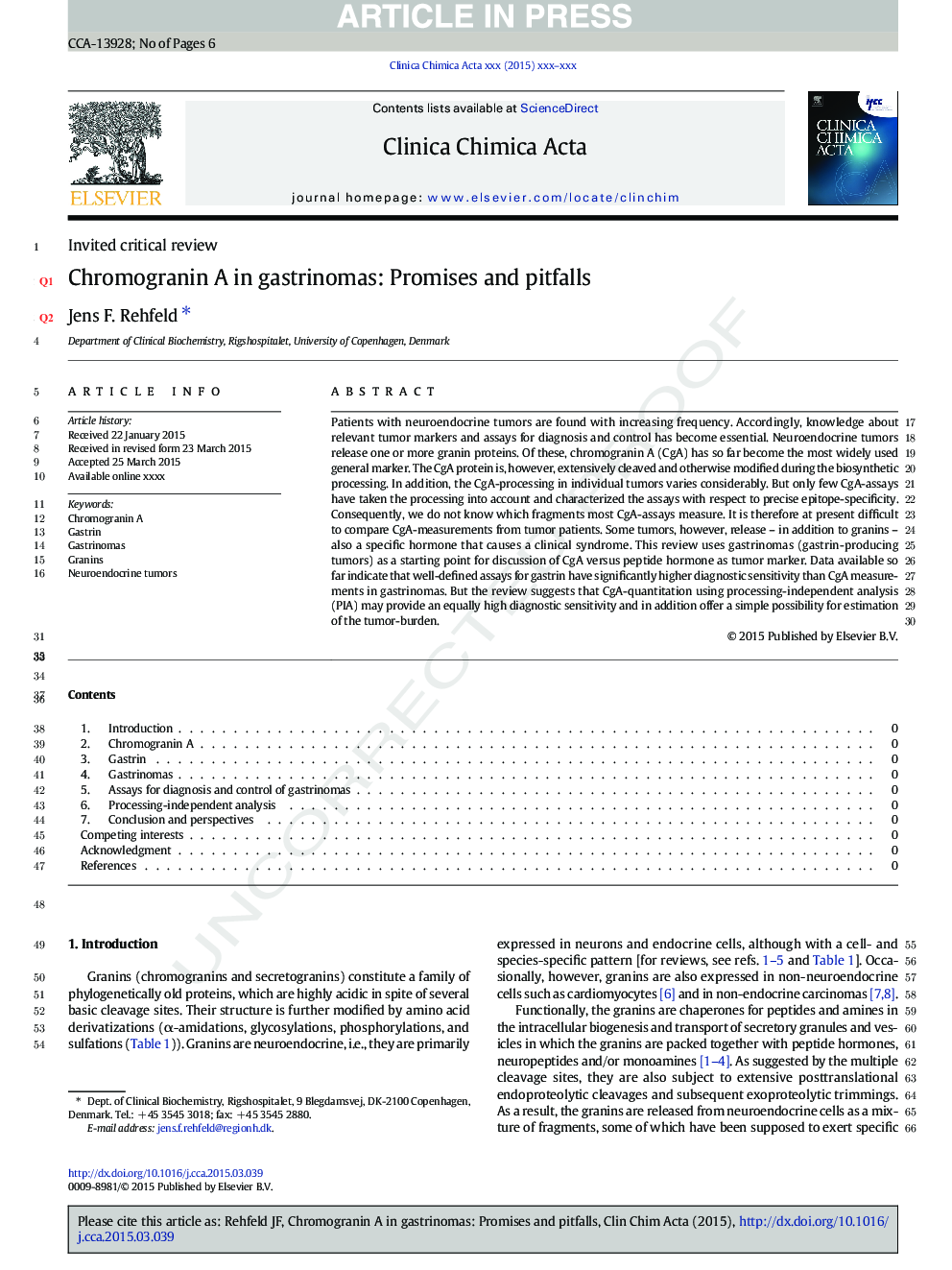| Article ID | Journal | Published Year | Pages | File Type |
|---|---|---|---|---|
| 8310700 | Clinica Chimica Acta | 2015 | 6 Pages |
Abstract
Patients with neuroendocrine tumors are found with increasing frequency. Accordingly, knowledge about relevant tumor markers and assays for diagnosis and control has become essential. Neuroendocrine tumors release one or more granin proteins. Of these, chromogranin A (CgA) has so far become the most widely used general marker. The CgA protein is, however, extensively cleaved and otherwise modified during the biosynthetic processing. In addition, the CgA-processing in individual tumors varies considerably. But only few CgA-assays have taken the processing into account and characterized the assays with respect to precise epitope-specificity. Consequently, we do not know which fragments most CgA-assays measure. It is therefore at present difficult to compare CgA-measurements from tumor patients. Some tumors, however, release - in addition to granins - also a specific hormone that causes a clinical syndrome. This review uses gastrinomas (gastrin-producing tumors) as a starting point for discussion of CgA versus peptide hormone as tumor marker. Data available so far indicate that well-defined assays for gastrin have significantly higher diagnostic sensitivity than CgA measurements in gastrinomas. But the review suggests that CgA-quantitation using processing-independent analysis (PIA) may provide an equally high diagnostic sensitivity and in addition offer a simple possibility for estimation of the tumor-burden.
Related Topics
Life Sciences
Biochemistry, Genetics and Molecular Biology
Biochemistry
Authors
Jens F. Rehfeld,
